
Dear INTOSAI WGEA Members and other readers,
A year has passed since becoming the Auditor General of SAI Finland and the Chair of the INTOSAI WGEA. This year has been a great opportunity for me to learn more about environmental auditing and the importance of global cooperation under the common goal of addressing climate change and environmental problems.
It has been a pleasure to see us wrap up the 2020-2022 Work Plan period and start the planning of next steps for 2023-2025. The new Work Plan will have two hubs: 1) the Climate & Biodiversity hub and 2) the Green Economy hub. The Secretariat and the Steering Committee will kick off the Work Plan at the 19th Steering Committee meeting pla…
Read More...WGEA and ClimateScanner at the XXIV INCOSAI
The XXIV International Congress of Supreme Audit Insitutions (INCOSAI) was held on 9, 10, and 11 November in Rio de Janeiro, Brazil. SAI Brazil will be the Chair of the INTOSAI Governing Board for the next three years (2022-2025). During INCOSAI, SAIs appr…
Read More...
Read about your fellow auditors' work on environmental issues

Dear INTOSAI WGEA Members and other readers,
A year has passed since becoming the Auditor General of SAI Finland and the Chair of the INTOSAI WGEA. This year has been a great opportunity for me to learn more about environmental auditing and the importance of global cooperation under the common goal of addressing climate change and environmental problems.
It has been a pleasure to see us wrap up the 2020-2022 Work Plan period and start the planning of next steps for 2023-2025. The new Work Plan will have two hubs: 1) the Climate & Biodiversity hub and 2) the Green Economy hub. The Secretariat and the Steering Committee will kick off the Work Plan at the 19th Steering Committee meeting planned for March 2023.
As an economist, I am particularly excited about the Green Economy hub. I believe it is increasingly important that climate and environmental actions are addressed and enforced with economic instruments. Moreover, in the Sustainability Reporting project, we have a chance to take environmental, social, and governance (ESG) issues into consideration from the private sector, which is the frontrunner in ESG reporting. In addition, the Environmental Accounting project opens interesting opportunities to cooperate with national statistic offices.
We should not forget about the equally important Climate & Biodiversity hub. This hub is the epitome of global cooperation, as our colleagues in SAI Brazil are launching the exciting global Climate Scanner initiative and the INTOSAI Development Initiative is preparing a global cooperative audit. Furthermore, we will continue our work with policy coherence by addressing the nexus between climate and biodiversity.
Finally, a big thank you to SAI USA for their continuous hard work to make yet another edition of Greenlines come true. Let’s keep this global cooperation flourishing in the coming year, and I hope you enjoy reading this edition!
Dr. Sami Yläoutinen
Chair of INTOSAI WGEA,
Auditor General of SAI Finland
WGEA and ClimateScanner at the XXIV INCOSAI
The XXIV International Congress of Supreme Audit Insitutions (INCOSAI) was held on 9, 10, and 11 November in Rio de Janeiro, Brazil. SAI Brazil will be the Chair of the INTOSAI Governing Board for the next three years (2022-2025). During INCOSAI, SAIs approved the INTOSAI Strategic Plan 2023-2028. According to the strategy, INTOSAI will continue contributing to the achievements of the United Nation’s 2030 Agenda for Sustainable Development.
The Declaration of Rio, adopted at the XXIV INCOSAI, stresses, among other things, the responsiveness of SAIs. It acknowledges the effects of climate change and other emergency situations, such as natural and manmade disasters, financial crises, and pandemics. In that sense, the Declaration challenges SAIs to provide oversight to help their governments and citizens with emergency preparedness and response. The statement also reaffirms SAIs’ commitment to the Sustainable Development Goals (SDG).
Visibility for INTOSAI WGEA
INCOSAI was a good opportunity for INTOSAI WGEA to present its work to the heads of SAIs around the world, as well as to relevant stakeholders that were present at the Congress. At the INTOSAI WGEA booth it was easy to have conversations on WGEA activities and upcoming projects both with stakeholders as well as SAI representatives. Our informal side program was also a way to give publicity for these projects.
WGEA Work Plan 2023-2025 includes two collaborative audit projects under Climate & Biodiversity hub, which were launched at INCOSAI: the ClimateScanner, led by SAI Brazil, and the Global Cooperative Audit on Climate Change Adaptation Action (CCAA), led by INTOSAI Development Initiative (IDI)—both in collaboration with INTOSAI WGEA.
Regarding IDI’s CCAA initiative, the project offers five thematic areas for SAIs to choose: (1) disaster risk reduction, (2) water resource management, (3) sea level rise and coastal erosion, (4) implementation of climate change adaptation plans and actions, and (5) implementation of national adaptation targets linked to SDG13 target on adaptation. Cross-cutting topics will be accountability, effectiveness, and inclusion.
In addition, INCOSAI was also the proper occasion for launching the ClimateScanner initiative, which will be described next.
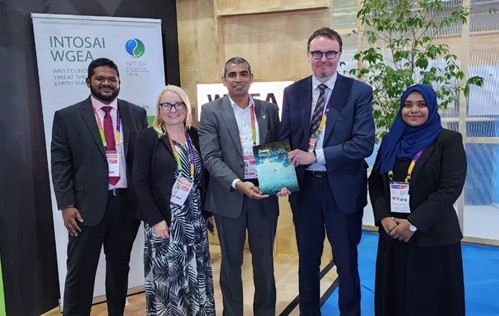
ClimateScanner
The ClimateScanner, to be developed by SAIs with assistance of experts, consists of a tool for rapid assessment of governmental actions to address climate change under three axes (governance, financing, and public policies), at two levels: national and international. The initiative aims to conduct evaluations at the national level, consolidate data on a global scale, produce useful information for the planning of future work by SAIs regarding climate change, and communicate relevant information to stakeholders. In addition, the project will contribute to knowledge and experience exchange between SAIs, as well as to the strengthening of INTOSAI as a relevant global actor.
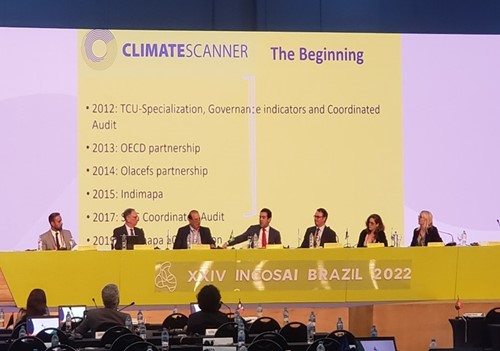
The core of the project is the development of an evaluation tool to be used by SAIs. This will be done throughout 2023 by the ClimateScanner Executive Group, composed of several SAIs and supported by experts.
The Executive Group will also be in charge of other tasks, such as conducting pilot tests, consolidating data, developing research for conceptual and legal basis, mapping SAIs’ capacities on climate issues, and conducting cross-border analyses on topics related to global governance and financing. Besides, this group of SAIs will be responsible for the development of technological solutions to support the application of the tool, as well as the implementation of communication strategies for the project as a whole.
Based on standardized assessments in the contexts of the participating countries, ClimateScanner will deliver portraits of the governmental actions put in place to address climate issues at the national level, in addition to the big picture—that is, an overview on climate action in a global perspective. With the information generated by ClimateScanner, it will be possible to map the main challenges that governments worldwide face when it comes to climate change, as well as their main strengths, both at the national and international level. This will provide decision-makers, stakeholders, and SAIs themselves with relevant information for orienting government action and resources to the critical issues of climate change.
Moreover, ClimateScanner aims to communicate information in a friendly way, by using plain language and visual resources. By doing so, this initiative aims to reach varied audiences, including society and the international community, and successfully communicate to citizens how the results of the assessments translate into impact in their lives. In turn, this will contribute to positioning SAIs and INTOSAI itself as relevant actors in global debates on climate change.
The results of ClimateScanner are expected to be available by the end of 2024.
For more information, please refer to https://sites.tcu.gov.br/climatescanner/ or send a message to climate(at)tcu.gov.br
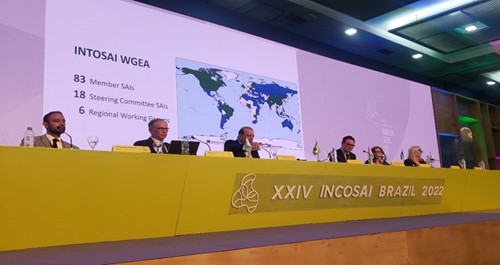
The WGEA Secretariat had a great 2022, filled with celebrating WGEA’s 30th Anniversary, having its first hybrid Assembly, and finalising the Work Plan 2020-2022. However, the work did not end there, and we are pleased to inform you of the most recent undertakings of the WGEA Secretariat.
Firstly, during the last few months, the WGEA Secretariat has been busy with various events. The WGEA had its own booth at the International Congress of Supreme Audit Institutions (INCOSAI) in November 2022 in Rio de Janeiro. The goal of the booth was to spread the news of past and present WGEA projects, network with current WGEA Members, and invite new SAIs to join our global efforts. In addition, WGEA co-led a side-event with the INTOSAI Development Initiative (IDI) and SAI Brazil at the INCOSAI.
November was a busy month for the Secretariat as the WGEA also hosted its annual side-event alongside the 27th Conference of the Parties to the United Nations Framework Convention on Climate Change (COP27). The purpose of the event was to inform SAIs about our climate work so that SAIs can continue to support the climate and environmental targets attached to the goals of COP27.
Secondly, during the last few months the Secretariat finalised its post-Assembly products. These include a Seminar Summary on Raising Resilience and a blogpost on the importance of resilience for SAIs. The Secretariat also published the Meeting Minutes of the Assembly with a special focus on day three.
Additionally, the Secretariat together with SAI Maldives designed an Art Display of various artistic products featured in the Assembly. The goal was to recognise the important role that art has in addressing climate and environmental issues.
Thirdly, the Secretariat has also been busy with launching the new Work Plan 2023-2025 into action. The Climate & Biodiversity hub has four exciting projects with the clear cross-cutting theme of global cooperation. The Green Economy hub is addressing emerging economic tools, including the relationship between the environment and statistics and environmental, social, and governance considerations in the private sector.
Finally, the Secretariat wishes to thank all our member SAIs and stakeholders for their continuous hard work.
In celebration of the working group turning 30, the Greenlines’ editors have included the crossword on page 5 for your enjoyment. Answers are on page 14. Have fun!
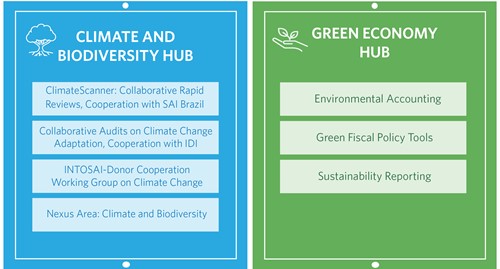
Test your knowledge of WGEA and its history
Check your answers below

|
Across 4. India's environmental training center (abbreviated) 5. The current chair of WGEA is from this country's SAI 6. Number of SAIs that are currently members of WGEA (hyphenated) 9. Main topic of the most recent assembly meeting (two words) 11. Provides overall administrative support to all aspects of the WGEA 13. First chair of WGEA was from this country
|
|
WGEA Turns 30! – Crossword Puzzle Answers:
Across: 4. iCED, 5. Finland, 6. eighty-two, 9. raising resilience, 11. Secretariat, 13. Netherlands
Down: 1. MOOC, 2. audit database, 3. projects, 7. Maldives, 8. six, 10. English, 12. twelve
All the 22 Arab region countries have adopted national plans and strategies that aim to achieve the Sustainable Development Goals (SDGs) with all their three axis—economic, social, and environmental—in accordance with the United Nations’ strategy in this regard. Governments have worked on adapting their institutional structure and arranging their national priorities in line with the SDGs. However, the Arab region is still facing challenges in the course of achieving these goals.
The lack of water, sanitation, and safe hygiene services is considered one of the major environmental risks facing the Arab region. In addition, providing these services is necessary to limit the spread of any infection, including the coronavirus. The Arab region is at the forefront of the world’s regions regarding the scarcity of freshwater and, therefore, increasingly relies on groundwater pumping and water desalination, in addition to wastewater treatment. However, all these approaches are costly and consume a lot of energy.
In the pursuit to achieve SDG 6 on ensuring the availability of water and sanitation services and their sustainable management, the Arab countries encounter pressures related to water pollution from industrial wastes, wastewater, and the uncontrolled use of pesticides and fertilizers. These pollutants jeopardize water quality and health, as they have negative impacts on children and infants and contribute to the spread of diseases in the Arab region. Thus, the Arab countries seriously strive to achieve SDG 6 in terms of clean water and sanitation.
Severe weather phenomena have increased droughts, flash floods, and sand and dust storms that threaten all countries alike, affecting people’s lives and health and causing serious damage to infrastructure and resources, both natural and man-made.
The Arab region witnessed a temperature rise of 1.5% compared to the pre-industrial era levels. This increase means that climate change will lead to a 20% decrease in renewable water resources by 2030. The decrease is caused by a reduction in rainfall and an increase in demand for water, accompanied by a rise in temperatures and increase in seawater leakage into coastal groundwater due to the sea level rise. This will lead to changing agricultural production patterns, threaten livestock production, negatively affect forests and wetlands, and increase the population’s exposure to the repercussions of water scarcity.
Climate change will also lead to many risks, including the destruction of coral reefs and the possibility that one third of the Arabian Gulf's marine species will be extinct by 2090 due to rising water temperature and related changes in salinity and oxygen levels. Nevertheless, the Arab region has achieved progress in establishing marine protected areas in order to implement SDG 13 on taking urgent measures to address climate change and its impacts.
In addition to the aforementioned challenges, the Arab region is witnessing a decline in biodiversity while desertification rates are increasing. Factors such as land and ecosystem degradation and the loss of biodiversity—including forests—have had a gradual negative impact on human health and well-being, despite all the efforts exerted at national, regional, and global levels. The recent regional reports issued by the Intergovernmental Science-Policy Platform on Biodiversity and Ecosystem Services (IPBES) indicate a decrease in biodiversity in all the world's regions.
Social, demographic, and economic growth in the Arab world has increased the demand for energy and cars in recent years, which resulted in an increase in air pollution to rates that pose a great danger on the population and cause a high number of deaths. Although the Arab region includes significant oil and natural gas reserves in addition to having the highest levels of solar radiation, many Arab countries are still seeking to develop their capacity to produce renewable energy.
In order to achieve SDG 7 on ensuring affordable provisions of reliable and sustainable modern energy services, there is a need to increase investment in clean energy sources, such as solar, wind, and thermal energy; expand infrastructure; and upgrade technologies in order to provide clean energy. Also, the adoption of cost-effective standards for a wide range of technology would reduce electricity consumption in buildings and industry.
The indicators related to the SDGs with an environmental dimension are associated with the continuation of progress on the Millennium Development Goals, as well as implementing what has not been achieved within its framework. The SAIs’ responsibility related to monitoring, following-up, and evaluating these indicators is increasing in order to help governments, their partners, local entities, and international, regional, and local concerns achieve the 2030 SDGs.
This is especially important because all countries in the Arab region, like many countries in the world, still witness a lack of adequate data on indicators that measure the environmental dimension of sustainable development. Data is also lacking on objectives no. 6-16 and 7-16 on the establishment of effective, transparent, and accountable institutions, and ensuring that decisions are made in a manner that is characterized by being responsive to the needs, inclusive to all, participatory, and representative.
Therefore, the Arab countries should work more seriously to achieve the SDGs and to cooperate with each other to agree on strong, common environmental policies, with the necessity to develop more effective strategies to curb climate change. Their governments should develop and implement integrated water and sanitation programs, increase investments in alternative, desalinated wastewater and renewable energy resources, adopting the approach of associating water, energy, and food security. They should develop integrated sustainable energy policies, together with enhancing efforts aiming to reduce energy consumption and increase the percentage of renewable energy.
In addition, they should build institutional and technical capacities to sustainably monitor and manage marine resources as well as enforce relevant laws. It is also critical to sustainably manage land through protected areas, sustainable agriculture, and increasing investment in the sustainable management of forests. Moreover, data collection systems should be enhanced. SAIs should take an active role in auditing goals, objectives and indicators, in addition to activating joint and cooperative audits of international environmental conventions.
In order to read the full article in Arabic, kindly navigate the following link: http://arabosai.org/Ar//upload/1652169729.pdf
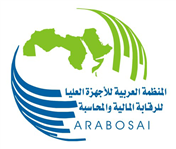
The Organization of Latin American and Caribbean Supreme Audit Institution (OLACEFS) Special Technical Committee on the Environment (COMTEMA) held the Technical Workshop on Climate Change in Asunción, Paraguay, from 5 to 7 December 2022, with the support of SAI-Paraguay and the German Cooperation, implemented by GIZ GmbH.
Representatives from 15 SAIs took part in the meeting, with the main objective of discussing the role of SAIs regarding climate change, and to get involved in the ClimateScanner, a global initiative led by SAI-Brazil as INTOSAI’s president. ClimateScanner is part of the INTOSAI WGEA’s Workplan 2023-2025, and was launched at the XIV INCOSAI, held in November 2022 in Rio de Janeiro (see feature story of this Greenlines edition).
At COMTEMA’s workshop, an INTOSAI WGEA representative presented its background, main activities, and products, as well as its Workplan 2023-2025. In addition, SAI-USA (U.S. GAO) gave a talk about their work on climate change and the challenges they faced, SAI-Chile (CGR-Chile) shared the results of a survey conducted in OLACEFS regarding the SAI’s contribution to fighting climate change, and the INTOSAI Development Initiative (IDI) presented the Global Cooperative Audit of Climate Change Adaptation Actions (CCAA), which will be conducted in 2023. Finally, SAI-Brazil (TCU-Brazil) presented the ClimateScanner initiative and conducted group discussions to improve the project design.
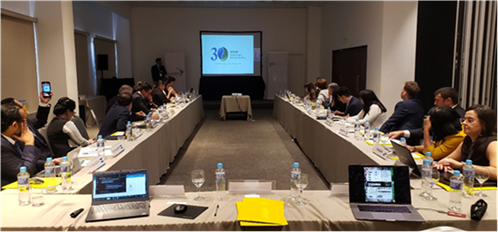
Moreover, the workshop was an opportunity for the SAIs to share their recent audits and experiences on diverse topics, such as sustainable procurement, protected areas, agrochemicals, urban solid waste, and water use concession for hydroelectric powerplants, among others. This contributed to strengthening SAIs’ capacities regarding environmental audits, and to reinforcing COMTEMA’s role in knowledge and experience sharing
 Bulgaria : Management of Plastic Waste
Bulgaria : Management of Plastic WasteIn 2021, the Bulgarian National Audit Office (BNAO) adopted the performance audit report “Management of Plastic Waste”, which covered the period from 01.01.2017 to 31.12.2019. The audit was carried out as part of a cooperative audit “Management of Plastic Waste in Europe” by the European Organisation of Supreme Audit Institutions (EUROSAI) Working Group on Environmental Audit with participation of the Supreme Audit Institutions of Albania, Malta, Moldova, Poland, Portugal, Romania, North Macedonia, Slovakia, Serbia, Turkey, and Hungary.
The national audit assessed the general framework of waste management, with an emphasis on plastic waste. Specifically, the audit analysed and assessed the following topics: the regulatory provisions and the established organization for the treatment of plastic waste; the implementation of national and local policies with set goals and measures for waste management—including plastic waste; and the monitoring of the results and achieved effect of the implemented measures for the treatment of plastic waste.
The national audit reached the following conclusions:
Please use the following links, which are published on the BNAO webpage, to access the joint report of the cooperative audit, “Management of Plastic Waste,” and the national audit report:
For additional information, please contact Rossena Gadjeva, Director of Performance Audits Directorate, at r.gadjeva(at)bulnao.government.bg, and Vyara Angelova, Director of International Relations and Projects Directorate, v.nintcheva(at)bulnao.government.bg.
 Canada : Biodiversity and Climate Change
Canada : Biodiversity and Climate ChangeCanada’s Commissioner of the Environment and Sustainable Development (CESD) and SAI Canada augmented their auditing of biodiversity through a series of reports published in October 2022. The series was anchored by a backgrounder providing general information on Canada’s commitments to protect biodiversity as well as species at risk status and trends. The Protecting Species at Risk audit found that the government’s approach to protecting aquatic species—assessed as being at risk—contributed to significant delays in listing a species under the Species at Risk Act and decisions not to list species with commercial value. “A bias against protecting species of commercial value under the Species at Risk Act, significant delays in listing species for protection, gaps in knowledge about species, and limited enforcement capacity all have adverse effects on ecosystems and communities,” said Canada’s CESD, Jerry V. DeMarco. Upcoming 2023 audits relating to biodiversity include Discretionary powers to protect species at risk and Follow-up on the recovery of species at risk.
In April 2022, a five-report CESD series focused on climate change. The CESD found that the government was not providing appropriate support to workers and communities through a Just transition to a low-carbon economy. More work was needed to ensure the government’s Greening government strategy delivers desired results, including plans to track emission reductions. The government’s hydrogen strategy overestimated Hydrogen’s potential to reduce greenhouse
gas emissions. The Funding climate-ready infrastructure report found that the government had not received complete or reliable information about the expected climate mitigation and resilience benefits of the projects it funded. Finally, the Carbon pricing report found that carbon pricing systems were in place in all of the country’s provinces and territories, but the government’s approach needed improvements to meet reduction targets.
Now, Canada is in the process of auditing the federal government’s commitment to tackling the twin crises of climate change and biodiversity with an upcoming audit on Forests and climate change. It will examine Canada’s progress toward planting two billion trees by 2030 and its contributions towards emissions reductions targets.
Canada has also taken the lead on a new project for 2023-2025—building off earlier WGEA work on policy coherence, multi-stakeholder engagement, and systems thinking—to conduct research on the nexus between biodiversity and climate change. While policies and international regimes exist to address climate change and biodiversity, there is a lack of coherence in policies that address these crises simultaneously. Therefore, it is important that future audit criteria reflect their fundamental interconnected relationship. The project’s main output will be an elaborated list of audit criteria, tested in different types of environmental contexts, which help auditors to consider the impacts of climate measures on biodiversity.
Audit reports by the Commissioner of the Environment and Sustainable Development are available at https://www.oag-bvg.gc.ca/internet/English/parl_lp_e_901.html.
For more information, please contact Kimberley Leach at Kimberley.Leach(at)oag-bvg.gc.ca.
 Egypt : Recent Meeting with the Secretary General of INTOSAI WGEA
Egypt : Recent Meeting with the Secretary General of INTOSAI WGEAOn September 15th, 2022, SAI Egypt’s WGEA members had the opportunity to convene shortly in the Accountability State Authority (ASA) headquarters with Dr. Vivi Niemenmaa, the Secretary General of the INTOSAI WGEA, following the 14th INTOSAI KSC-SC Meeting that was held in Egypt during the period from the 12th to the 14th of September 2022.
During the meeting, many topics were discussed regarding the upcoming INTOSAI WGEA Work Plan (2023-2025), as well as the ASA’s environmental audit’s themes and issues.
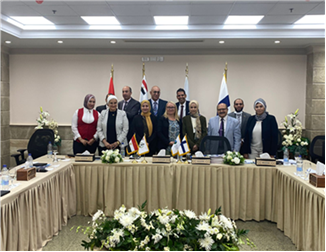
SAI Egypt’s WGEA members were able to share with Dr. Niemenmaa their Environmental Auditing Work Plan (2023-2025) highlighting the importance of using geographic information systems (GIS) techniques in the Environmental Auditing field.
On September 26th, 2022, SAI Egypt’s WGEA members participated in the webinar on “Clean Water and Sanitation,” which was organized by the International Center for Environmental Audit and Sustainable Development (iCED).
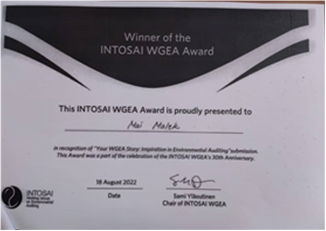
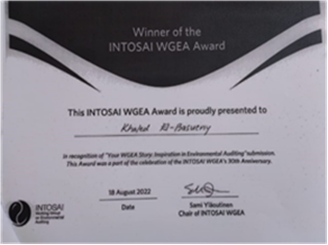
Two of SAI Egypt’s WGEA members were awarded recognition certificates by the INTOSAI WGEA for their effective contribution with the articles entitled “Your WGEA Story: Inspiration in Environmental Auditing” as a part of the INTOSAI WGEA’s 30th Anniversary celebration. One of the awarded contributions was published on the WGEA’s website as an example of how INTOSI WEGA has affected the public auditors’ lives.
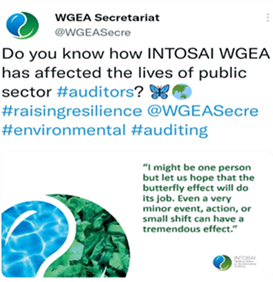
 Estonia : Estonia Follow-up Audit on Radioactive Waste
Estonia : Estonia Follow-up Audit on Radioactive WasteEstonia does not have any nuclear power plants, and the yearly generation of man-made radioactive waste is very small. However, the Government is responsible for managing a former Soviet Union nuclear facility (land-based training reactors for training nuclear submarine crews for the Soviet fleet), which has not been in use since the 1990s and should be safely dismantled and stored at the final radioactive waste repository by 2040.
The National Audit Office of Estonia (NAOE) conducted a follow-up audit on hazardous and radioactive waste in 2022. The audit focused on the most challenging issues identified in audits conducted in 2015 and 2018. One of these issues was that the Government (the Ministry of the Environment) had not started the process of establishing the final repository for man-made radioactive waste in order to ensure its completion by the deadline.
In 2022, NAOE found that the Ministry of the Environment had started the spatial planning process, site selection, and environmental impact assessment of the final repository. However, the planned activities were delayed and the preliminary stage of establishing the repository cost more than twice as planned. The main problem was that the responsible institutions and Government had not found a solution for long-term financing to establish the repository, which makes the establishment of it by 2040 questionable.
The summary in English is available at https://www.riigikontroll.ee/tabid/206/Audit/2553/Area/15/language/en-US/Default.aspx.
For more information, please contact Ms. Airi Andresson airi.andresson(at)riigikontroll.ee.
 European Court of Auditors : Special Report on Climate Spending in the 2014-2020 EU Budget
European Court of Auditors : Special Report on Climate Spending in the 2014-2020 EU BudgetIn May 2022, the European Court of Auditors (ECA) published a special report on climate spending in the 2014-2020 EU budget. This report expands on ECA’s previous work in the area, which identified weaknesses in the methodology used by the European Union (EU) to track climate action: 2013 report on EU climate finance in the context of external aid, 2016 report on spending at least one euro in every five from the EU budget on climate action, and 2020 review on tracking climate spending in the EU budget.
Addressing climate change is a key priority for the EU and the EU committed to spending at least 20% of the budget for 2014-2020 on climate action. In 2021, the Commission reported that it had met the target, having spent €216 billion (20.1%) on climate-relevant measures.
The objective of ECA’s 2022 report was to determine whether the Commission had reported relevant and reliable climate-spending information for 2014-2020. The ECA auditors examined how the Commission applied its methodology in assessing climate spending, and how the reported expenditure contributed to climate action. The report also identifies the examples of EU funded actions with beneficial or potentially harmful effects on climate.
The ECA auditors concluded that the climate spending in the 2014-2020 EU budget was not as high as reported and that the reported spending was not always relevant to climate action. Their analysis indicated that the Commission unduly recorded around €72 billion as climate spending. The more reasonable coefficients applied by the ECA auditors reduced the likely share of the EU budget that is climate-relevant to around 13% (approximately €144 billion) rather than 20%.
 Ireland : Remediation of Landfill Sites
Ireland : Remediation of Landfill SitesSAI Ireland is adding three audits it completed in recent years to the INTOSAI WGEA Audit Database, including one published in 2020 on the remediation of landfill sites.
Responsibilities for the oversight and management of waste in Ireland are spread across a number of public bodies. The Department of the Environment, Climate and Communications (the Department) has overall responsibility for waste management policy and legislation. In 2006, the Department established a landfill remediation grant scheme to fund capital costs associated with the remediation and aftercare of landfill sites.
Ireland’s Comptroller and Auditor General carried out an examination of the grant scheme in 2020 to establish, among other things,
The examination was carried out through enquires and examinations of records and data held by the Department and the Environmental Protection Agency (EPA).
At July 2020, the total number of identified landfill sites in the State was 611—consisting of 117 sites licensed and regulated by the EPA, and 494 unregulated sites registered on a web-based register by local authorities. While the EPA monitors environmental risk factors on an ongoing basis at the sites it has licensed, it does not do so at the other sites.
The examination found that 280 of the 494 unregulated sites had been risk-assessed by the end of 2019, with over half determined to be of either moderate or high risk. However, remediation plans were submitted in respect of only 29 of them. Neither the EPA, nor the Department, nor the regional waste management planning offices were able to provide complete information on the risk-assessment status of the remaining 214 unregulated sites.
Financial provision arrangements as part of EPA licensing are intended to ensure that there will be sufficient resources available to fund restoration and aftercare costs when landfill sites close, or when pollution incidents occur during operation. One landfill examined provided an example of where the financial provision arrangements in place failed to provide the funds required to meet closure and aftercare costs. Instead, the Department is having to fund substantial costs associated with closure, remediation and ongoing monitoring of the site.
The report includes recommendations for the Department to:
The full report is available on SAI Ireland’s website at https://www.audit.gov.ie/en/.
 Latvia : Forum of the Supreme Audit Institutions of the Baltic States
Latvia : Forum of the Supreme Audit Institutions of the Baltic States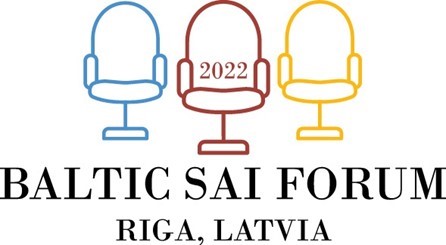
In September 2022, the first forum of the supreme audit institutions of the Baltic States took place in Riga, Latvia.
Leaders and experts of the supreme audit institutions of Estonia, Latvia, and Lithuania discussed the strategic development directions of their institutions and opportunities for tripartite cooperation. By organizing the first forum of supreme audit institutions of the Baltic States, as the host of the event, the State Audit Office of Latvia emphasized the significance of cooperation among the three neighbouring countries and initiated a long-term cooperation platform where knowledge and experience could be shared in a coordinated manner.
Among more general topics such as the strategic priorities and challenges of the institutions, selection of audit topics, planning of audit resources, and the use of benchmarking practices in auditing, an expert (auditor-level) experience exchange discussion was held on the performed audits related to the protection of natural resources. SAI Estonia presented their audit report on forest felling in protected areas; SAI Latvia presented findings in audits related to mineral resources and hunting; and SAI Lithuania introduced their audit report on the protection of the forestry resources of Lithuania.
During the seminar, experts shared common findings from relevant recent audits, an audit approach involving experts and society, as well as using innovative audit methods such as modelling, GIS, LiDAR, and others. The discussion also included future challenges when implementing the European Green Deal targets considering the emerging energy crisis.
The collaboration was considered a great success as it revealed common problems and challenges in environment related audits, e.g., independence of involved experts and divergent opinions as well as pressure from the public (non-governmental organizations) on environmental issues. Experts noted that it is important to perform these audits in a step-by-step approach, thus covering the whole field, as there is a certain lack of internal and external experts which can be involved thoroughly.
 Lithuania : Is it Possible to Maintain a Safe and Clean Environment without Monitoring Air Quality?
Lithuania : Is it Possible to Maintain a Safe and Clean Environment without Monitoring Air Quality?According to the World Health Organisation, air pollution is the biggest environmental and health risk in the European Union. Although Lithuania is one of the cleanest countries in Europe in terms of air quality, the state of the ambient air and its changes show that there are pressing issues to be addressed at national, municipal, and local levels.
The National Audit Office's audit assessing the state of the ambient air (audited period 2018-2021) showed that, although the state’s priorities are declared to be focused on a clean and safe environment, with the aim of reducing by half the air pollution harmful to human health in Lithuanian cities and towns by 2030, systematic and comprehensive monitoring of ambient air quality is not yet ensured. For example:
Continuous and systematic monitoring of ambient air quality and the collection and assessment of objective and relevant information is essential to ensure that ambient air quality improves, to protect a healthy and clean environment for the public, and to enable timely action to be taken to reduce air pollution.
 Federated States of Micronesia : Prohibition on the Importation of One-Time Use Disposable Styrofoam, Plastic Food Service Items, and Plastic Shopping Bags
Federated States of Micronesia : Prohibition on the Importation of One-Time Use Disposable Styrofoam, Plastic Food Service Items, and Plastic Shopping BagsThe Federated States of Micronesia’s (FSM) National Office of the Public Auditor recently issued an environment-related inspection report to the FSM Congress, FSM President, and stakeholders including the general public, titled: “More Collective Efforts Are Needed to Ensure Full Compliance with The Ban On Imports Of Single Use Styrofoam & Plastic Items And Reduce Environmental Threats” (October 2022). This inspection aimed to verify compliance and assess the effectiveness and efficiency of the internal controls pertaining to the implementation of the prohibition law that was passed by the FSM Congress for implementation from July 1, 2020.
In introducing the new law, the FSM president said:
“We must demonstrate courage and conviction in our actions, and compassion and care towards our environment and citizens. We must lead by example. This new ban on disposable plastic, which allows the importation of reusable and recycled plastic, shows that it is possible to be environmentally conscious while still retaining sensitivity to the conveniences appreciated by citizens and the business community.”
The audit team carried out surveys of businesses based in Pohnpei State (one of the four government states of FSM) and performed physical verifications. The inspected entities were the Department of Environment, Climate Change and Emergency Management, and the Department of Finance and Administration.
While acknowledging the bold position taken by the FSM legislature to prohibit importation of the subject items and plastic shopping bags, the auditors found that more collaboration was needed to address areas of capacity to ensure the effectiveness of the new law. The inspection concluded:
The audited agencies agreed with the findings and recommendations.
The full report is available at: http://www.fsmopa.fm/files/onpa/2022/Final%20Inspection%20Report%20PL21-76%20(Plastic)%2010-14-2022%20(1).pdf
 United States : Modernizing Air Quality Monitoring
United States : Modernizing Air Quality MonitoringSince the 1970s, the U.S. national ambient air quality monitoring system has collected essential information used to evaluate compliance with national air quality standards, characterize pollution levels, study health risks from pollution exposure, and develop strategies to improve air quality. Data from the monitoring system show that while the United States has made progress in reducing air pollution, risks to public health and the environment remain. The U.S. Environmental Protection Agency (EPA) and air agencies from states and localities together manage the system’s aging infrastructure.
In July 2022, the U.S. Government Accountability Office (GAO) testified about air quality monitoring before a U.S. Senate Committee. GAO discussed the needs for additional air quality information and the challenges in meeting those needs. For example, air quality managers and researchers need more data to understand health risks in potential hotspots (local areas of high pollution). Air quality managers and researchers also need additional information about air toxics, which are pollutants such as ethylene oxide that are known or suspected to cause cancer or other serious illnesses.
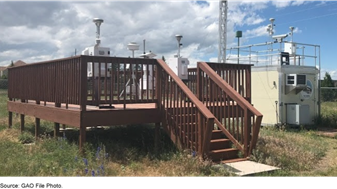
Air Quality Monitoring Site
GAO based the testimony on a November 2020 report (GAO-21-38). For that report, GAO reviewed literature, laws, regulations, and agency documents. In addition, GAO interviewed EPA officials, selected state and local officials, representatives from air quality associations, and stakeholders such as academic researchers.
GAO made two recommendations in the report to help sustain and modernize the air quality monitoring system. GAO recommended that EPA (1) establish an asset management framework for the monitoring system and (2) develop a modernization plan for the monitoring system that aligns with leading practices. These actions would better ensure that the ambient air quality monitoring system meets information needs and help position EPA to protect public health. EPA generally agreed with the recommendations and has begun working with state, tribal, and local air agencies to implement them.
The full GAO report is available at https://www.gao.gov/products/gao-21-38 and the testimony statement is available at https://www.gao.gov/products/gao-22-106136. For further information, contact Alfredo Gómez at gomezj(at)gao.gov.

The INTOSAI Working Group on Environmental Auditing (WGEA) aims to increase the expertise in environmental auditing and to enhance environmental governance with high-quality contribution and visibility by both members of the Working Group and non–member SAIs. Currently the INTOSAI WGEA consists of 86 member countries.
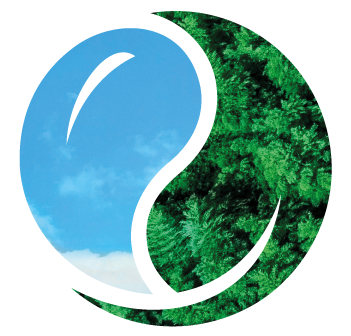
Vivi Niemenmaa - Secretary General
Email: vivi.niemenmaa@vtv.fi
Kati Hirvonen - Project Specialist
Email: kati.hirvonen@vtv.fi
India Roland - International Affairs Planner
Email: india.roland@vtv.fi
Mohamed Ibrahim Jaleel - Environmental Audit Manager
Email: mohamed.jaleel@audit.gov.mv
We collect and process your data on this site to better understand how it is used. We always ask you for consent to do that. You can change your privacy settings here.